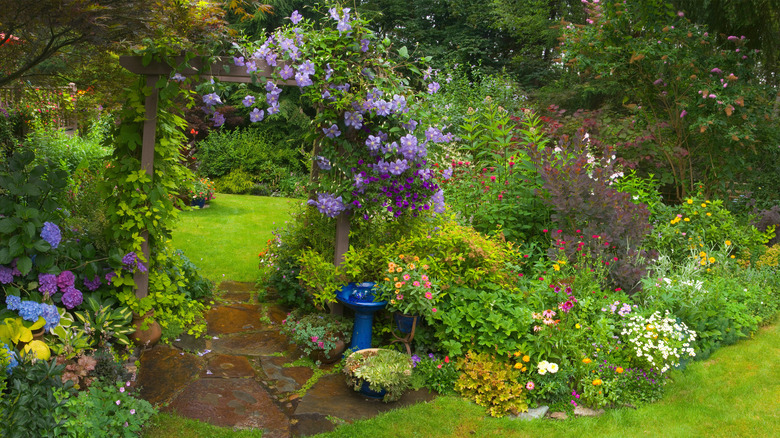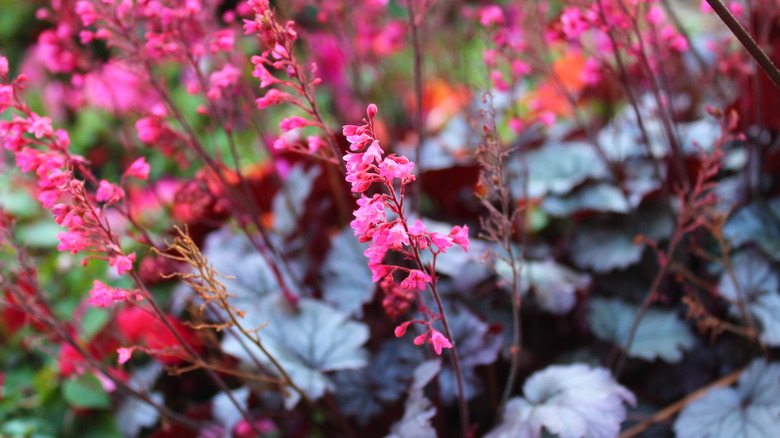The Dainty Plant That Attracts Beautiful Hummingbirds & Butterflies To Your Yard
When your flower garden attracts hummingbirds and butterflies, the beauty of the garden multiplies. With "flying flowers" like monarchs, swallowtails, calliopes, and ruby-throats flitting around your yard, it's like your blooms have taken to the sky. Plants that attract both hummingbirds and butterflies to your yard are smart additions to your garden if these flying beauties bring you joy. Coral bells (Heuchera) may not be on your radar, but this curiously lovely plant has qualities that appeal to butterflies and hummingbirds alike.
These perennial North American natives are evergreen in warm regions and semi-evergreen in some colder regions. Able to flourish from zones 4 to 9, in heat, humidity, cold, drought, and less-than-perfect soil, it's hard to go wrong with coral bells. With multicolored, scalloped leaves and tiers of pink, bell-shaped flowers atop a straight stem, the wildlife won't be the only creatures to fall in love with coral bells. Luckily, Heuchera is not appealing to deer.
Among the many varieties of coral bells, you'll find foliage in almost any hue. Red is a color you should add to the garden to help attract hummingbirds, and with coral bells, you get twice the reward. Opting for a type that has both red leaves and flowers like 'Berry Smoothie' coral bells or 'Northern Exposure Red' (Heuchera x 'TNHEUNER') may increase pollinator traffic to your space.
How to choose and care for coral bells
These delicate blossoms are part of a surprisingly tough plant. Despite their low-maintenance credentials, there are certain things you should know about Heuchera. Source coral bell plants best for your climate, and provide the right care for them to each their potential. Do note that some coral bell varieties are bred mainly for their foliage, sowhen shopping for plants, choose types that reliably produce flowers.
Heuchera are especially suited for cool climates, since their native range is mountainous or plains areas of North America. There are several varieties of coral bells that are bred for warmer climates. Cultivars with fuzzy leaves can weather heat and dry conditions better than others. Slightly fuzzy 'Grape Expectations' is a great candidate for hot, drought-prone regions, while 'Caramel' (Heuchera x villosa 'Caramel') thrives in hot, humid areas. No matter the variety you choose, coral bells grow well in containers, allowing you to bring them inside in extreme weather.
Heuchera stands out among beautiful flowers that grow perfectly in the shade, although they also grow well in sunny areas. An optimal spot for coral bells provides 4 to 6 hours of direct sunlight per day. Plants with darker leaves can tolerate more direct sun, while their lighter-leaved counterparts will do better with more shade. Pick a spot that will accommodate coral bells' eventual spread; they can grow as tall as 16 inches and between 12 and 36 inches wide. They like moist soil, but overwatering can spell doom for coral bells. Water them deeply in their first year, but err on the drier side in later seasons.

